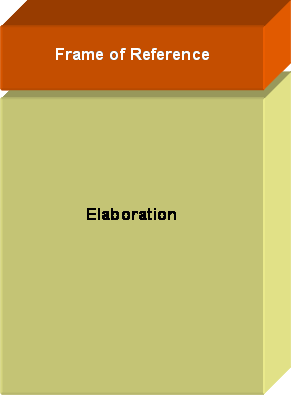The Science Of Scientific Writing Set B Paragraphs: Intro to Readers' Expectations The Landmark What makes a landmark? Exercise 1 Quiz Landmark should appear early Exercise 2 A kick in the tail A plan for writing landmark-final paras Exercise 3 Exercise 4 Exercise 5 Exercise 6 Final Page
OVERVIEW: The way to well-written science
PART I: Paragraphs and Sentences
SET A: Paragraphs: The Maps Behind Them
SET B: Paragraphs: Using Maps to Meet Readers' Expectations
SET C: Paragraph Coherence and Cohesion
SET D: Sentences
SET E: Scientific Sections (including Methods)
SET F: Scientific Sections: The Discussion
SET G : Scientific Sections: The Introduction
SET H : The Paper as a Whole
The landmark is expected early: the second expectation of paragraph structure
In the great majority of longer paragraphs in academic writing (e.g. four or more sentences) the landmark sentence will appear early in the paragraph, in fact most often being the very first sentence (e.g. see study by Smith, 2008). As such it is not only provides a landmark, but a frame of reference for all the remaining sentences. The utility of an initial framing - or topic - sentence in expository writing is emphasised heavily in elementary and higher schools in America and elsewhere in the world. According to George Gopen (in The Sense of Structure: Writing from the Reader's Perspective) it is however important to realise that in more sophisticated academic writing, readers do not "insist" that the landmark sentence will appear first up. They are quite happy to have one, or even two, sentences prior to it, but not any more than two.
For example in the paragraph below (landmark sentence shown in bold),
We now move away from the focus on flowering times. The preliminary trapping experiments had indicated that pollination of most species in the study area was insect-mediated. In our efforts to identify possible pollinators of Lantana camara, four species of butterflies were identified. The most frequently seen species was the Common Jay, Graphium doson. The Common Jay was also the smallest of the observed species, with a wingspan of 70-80mm. Slightly less frequent than the Common Jay was the Crimson Rose, Pachliopta hector. The Southern Birdwing (Troides minos), the largest of the butterflies observed (wingspan 140-190mm), was only an occasional visitor to the site. The least frequently seen species was the Common Bluebottle, Graphium sarpedon.
the first sentence provides navigational assistance, and the second a conceptual lead-in to the third (landmark) sentence. And the paragraph is still admirably intelligible.
Longer paragraph structure introduces an important structural feature of all units of discourse
As implied by what has been said above, paragraphs beyond three sentences in length will typically consist of two components:
- a 1-3 sentence introductory section that concludes with a landmark sentence and provides a frame of reference for all that follows
- a section of one or more sentences that elaborates upon the introductory section
The longer the paragraph, the greater will be the expectation that the first section is relatively short compared to the second, as depicted in the diagram below:

We will see later on that this pattern, a short Frame of Reference followed by a longer elaboration, is common to sentences, sections and the text as a whole. One of the defining features of text is that, unlike the all-at-once transmission of information we get with grapical forms of communication, texts can only reveal their content in time, in a step-wise manner. It is therefore very important to start any discourse unit by giving the reader some clues as to the overall plan of the unit.
......